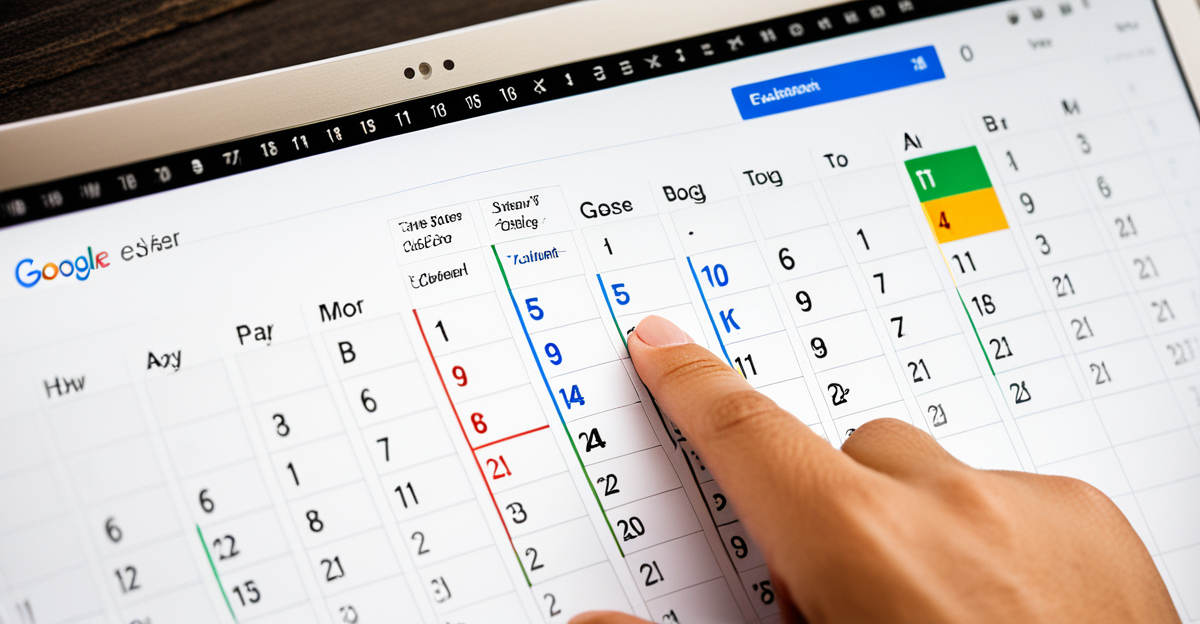Adding more colors to your Google Calendar transforms how you organise and view your schedule. Customising event colors not only improves clarity but also boosts productivity by making priorities instantly recognisable. This guide reveals practical steps and tips to expand your palette, helping you tailor your calendar’s look and workflow effortlessly.
Step-by-step guide to expanding and customizing Google Calendar colors
To easily add more colors to your google calendar, start by exploring the built-in color palette for calendars and events each calendar comes with a default set, but you can modify these as needed. Simply click the three vertical dots next to your calendar’s name, then pick from a broad selection or use the + option to add a custom color using a hex code for greater personalization. This method works on both desktop and mobile, ensuring consistency across all your devices.
Topic to read : Revamp your google calendar: 5 vibrant color hacks to try
Event color coding in Google Calendar isn’t just for aesthetics. Assigning distinctive colors to events like meetings, reminders, or personal appointments helps you instantly identify what’s on your schedule. Use bold colors for high-priority or recurring tasks, and softer tones for lower-priority items, turning your calendar into a visually organized dashboard.
For even more customization, consider third-party extensions or scripts that can expand your color palette beyond Google’s default range this is particularly useful for users with multiple overlapping calendars or frequent event types. While Google doesn’t natively offer event filtering by color, savvy users leverage scripts for advanced organization and clarity. If you need detailed instructions on this process, this page explains it in detail: easily add more colors to your google calendar.
This might interest you : What role does cybersecurity education play in UK schools?
Methods to Add More Colors and Customize Your Calendar Appearance
Changing Calendar and Event Colors Using Built-in Google Calendar Features
To customize calendar colors in Google Calendar, select your calendar from the sidebar and click the three-dot menu. This reveals available google calendar theme colors choose any hue to apply it instantly. For event-specific color coding, edit or create an event and tap the color palette icon, then pick from the provided calendar color labels. This straightforward process supports basic calendar color organization, letting users visually distinguish personal, work, or group schedules.
Creating and Managing Custom Colors with Browser Extensions and Third-party Tools
For greater color variety, expand Google Calendar beyond its native options. Browser extensions and third-party tools enable creating event color groups by introducing advanced palettes. Extensions like Stylus allow you to define custom shades, so your calendar color organization becomes as detailed as your schedule demands. These tools support add custom colors to calendar actions, broadening aesthetic and functional possibilities while maintaining clear event color coding.
Assigning Multiple Color Labels and Color Groups to Events and Calendars
Organize your schedule more effectively by using calendar color labels to assign multiple identifiers to a single event. This multi-color event customization helps with complex planning, especially if you need to manage overlapping workstreams. By combining built-in features with external solutions, you can refine google calendar color organization to match your workflow and enhance both readability and productivity.
Troubleshooting and advanced tips for color customization
What to do if color change options are limited or unavailable
When google calendar color adjustment feels restricted, start by confirming you are using the latest version of Google Calendar web and mobile versions may differ in feature availability. Calendar color management options might be missing if you are viewing shared or read-only calendars. Changing permissions or working from a primary account typically restores full access. If you cannot find the “Add Custom color” button, try clearing your browser cache or accessing Google Calendar from another device to test for interface glitches.
Recommended extensions and scripts for advanced coloring needs
Power users seeking next-level google calendar color tricks benefit from browser extensions and user scripts, such as Stylus or Google Calendar Plus. These tools expand default color palettes, streamline calendar visual organization, and allow for vibrant, custom shades unattainable through built-in menus. For even more control, Google Apps Script enables users to automate and assign custom color creation in calendar, as well as filter events by custom color logic.
Strategies for effective color coding: best practices and workflow tips
For optimal calendar color management, stick with a limited set of hues otherwise, your calendar visual organization loses clarity. Use bold shades for urgent tasks, lighter pastels for routine events, and consistently apply your key to avoid confusion. Experiment with color coding tips and tricks until your schedule pops, enabling you to spot important blocks at a glance and enhance calendar colors for productivity gains.
Maximizing productivity and clarity through event color coding
Color coding for productivity transforms how you approach daily tasks. Assigning distinct colors to events clarifies your agenda and allows you to distinguish events by color instantly. With Google Calendar event highlighting, important meetings, reminders, or deadlines stand out, making it easy to improve calendar visibility and avoid missing urgent tasks. A dedicated hue for high-priority events can prompt faster responses, while softer shades help identify less pressing appointments.
Google Calendar color labels also support calendar readability improvements and effective time management. For example:
- Use bold red for deadline-driven projects,
- Green for personal appointments,
- Blue for recurring team meetings.
When you improve scheduling with colors, you gain better control over time blocks. Color coding for time blocking segments your day visually, helping you stay on task and avoid distractions.
For those managing large volumes of events, calendar event status with colors provides instant insight set yellow for tentative, purple for confirmed, or grey for follow-up required. These nuanced color choices allow event color differentiation at a glance, promoting efficiency without the need to read every event detail.
Adopting event color coding in Google Calendar moves your workflow closer to effortless, at-a-glance organization. When you optimize your calendar with intentional color coding, prioritization and daily decision-making become faster and clearer.











